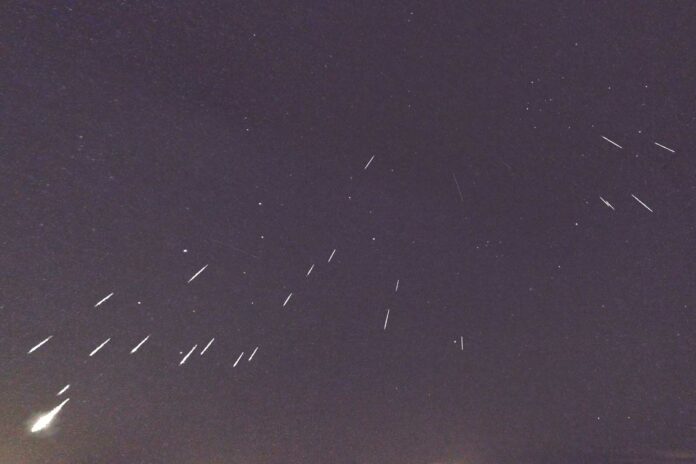The interplanetary medium primarily lacks particles in the size range that comets expel, typically at least cm in size. These particles are assumed to be expelled from the solar system through collisions between grains.
The region between the planets, known as the zodiacal cloud, is filled with comet dust. However, excessive disintegration has shrunk that dust to such a small size that it now effectively scatters sunlight, producing the dim glow in the night sky called the “zodiacal light.”
According to a 45-member research team, heat, not high-velocity collisions, causes the comet ejecta’s pulverization.
Dr. Peter Jenniskens, meteor astronomer at the SETI Institute, said, “Comets eject most debris as large sand-grain to pebble-sized particles, called meteoroids, that move in meteoroid streams and cause the visible meteors in our meteor showers. In contrast, the zodiacal cloud mostly comprises particles the size of tobacco smoke that even radars have difficulty detecting as meteors.”
Why do pebbles pulverize after they leave the comet?
Jenniskens said, “Meteor showers show us this loss of pebbles over time because older showers tend to contain fewer bright meteors than young showers. We set out to investigate what is responsible.”
Under Jenniskens’ direction, a global network known as “CAMS,” funded by NASA, uses low-light video security cameras to search the night sky for meteors. Most of the paper’s co-authors are the researchers and citizen scientists who established and ran the 15 CAMS camera networks across ten nations.
Detection specialist Peter S. Gural said, “We developed software that detects meteors in videos recorded from different locations and then triangulates their trajectory in the atmosphere. Meteors arriving from the same direction each day belong to a meteor shower.”
On the website https://meteorshowers.seti.org, daily maps indicate the direction from which those meteors come to Earth. The combined maps were just released in a book, “Atlas of Earth’s Meteor Showers,” an encyclopedia with details on every known meteor, following 13 years of observations.
Stuart Pilorz of the SETI Institute said, “As part of this work, we determined the age of meteor showers from how much they had dispersed and then examined how rapidly they were losing their large meteoroids compared to the smaller ones.”
The scientists measured the distances between those streams and the Sun to determine what could be causing it. If collisions were the cause, the pebbles should have been destroyed more quickly in direct proportion to their proximity to the Sun.
Jenniskens said, “Because there is more comet dust closer to the Sun, we had expected collisions there would pulverize the pebbles that much faster. Instead, we found that the pebbles survived better than expected.”
The study team discovered a direct correlation between the maximum temperature stones encounter during their orbit and their eventual disintegration. Large meteoroids close to Earth and reaching Mercury’s orbit appear to be primarily broken apart by thermal pressures. The particles lose material and disintegrate as they go hotter and farther into Mercury’s orbit.
Jenniskens said, “Here at Earth, we sometimes see that process in action when in a short time of say 10 seconds, we detect ten or twenty meteors in part of the sky, a meteor cluster, the result of a meteoroid having fallen apart by thermal stresses just before entering Earth’s atmosphere.”
Journal Reference:
- Peter Jenniskens, Stuart Pilorz et al. Lifetime of cm-sized zodiacal dust from the physical and dynamical evolution of meteoroid streams. Icarus. DOI: 10.1016/j.icarus.2024.116034
